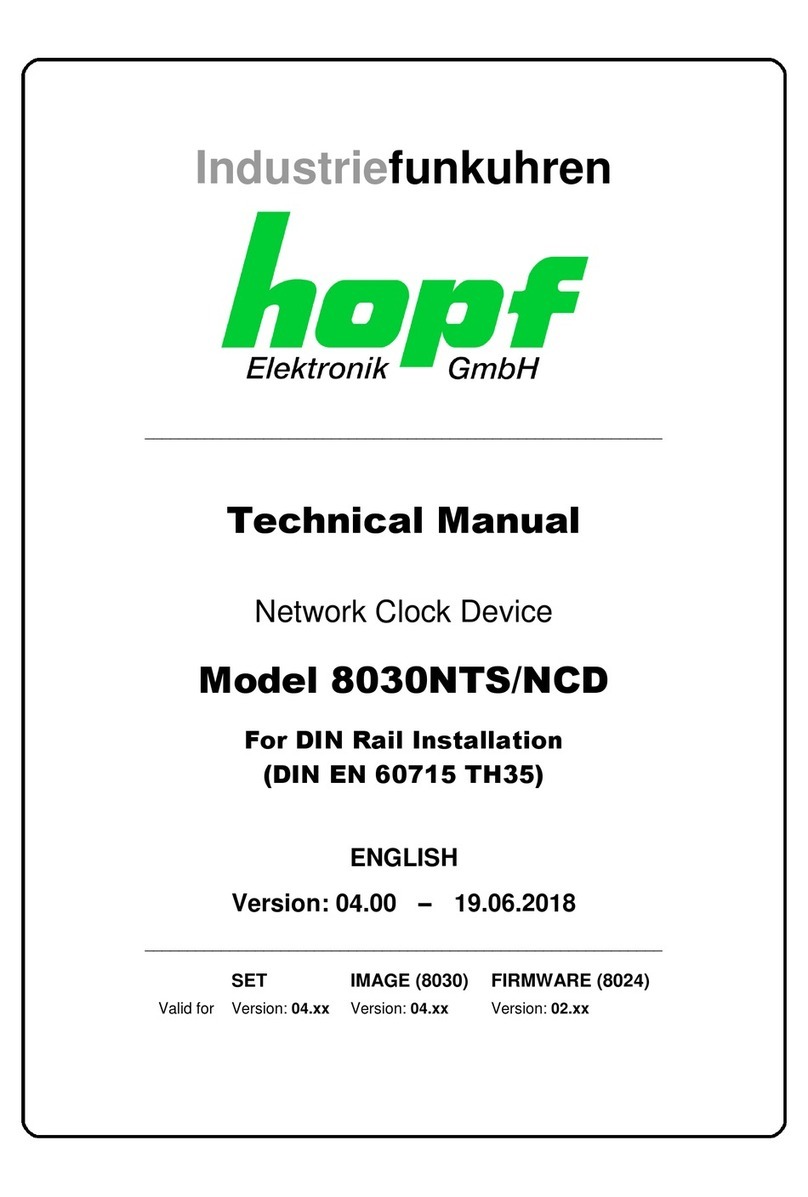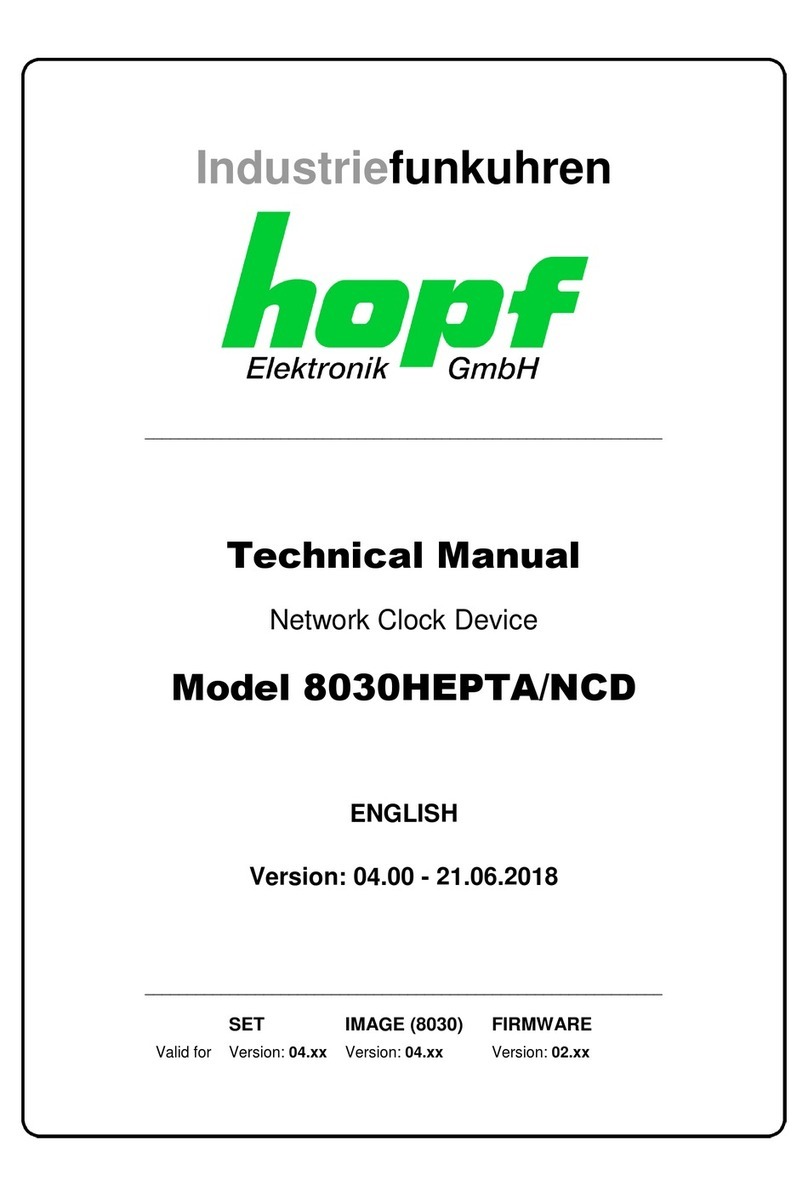
TABLE OF CONTENTS
7271 and 7272 NTP/SINEC H1 LAN Board - V06.00 7 / 100
hopf
Elektronik GmbH
Nottebohmstr. 41
•
D-58511 Lüdenscheid
•
Tel.: +49 (0)2351 9386-86
•
Fax: +49 (0)2351 9386-93
•
Internet: http://www.hopf.com
•
8.3.3.4 Server Configuration................................................................................................................... 60
8.3.3.4.1 General / Synchronization Source 60
8.3.3.4.2 General / Log NTP Messages to Syslog 61
8.3.3.4.3 Crystal Operation 61
8.3.3.4.4 Broadcast / Broadcast Address 61
8.3.3.4.5 Broadcast / Authentication / Key ID 62
8.3.3.4.6 Additional NTP SERVERS 62
8.3.3.5 Extended NTP Configuration...................................................................................................... 63
8.3.3.5.1 Suppression of unspecified NTP outputs (Block Output when Stratum Unspecified) 63
8.3.3.5.2 NTP Timebase 63
8.3.3.6 Restart NTP................................................................................................................................ 64
8.3.3.7 Access Restrictions / Configuring the NTP Service Restrictions................................................. 65
8.3.3.7.1 NAT or Firewall 66
8.3.3.7.2 Blocking Unauthorised Access 66
8.3.3.7.3 Allow Client Requests 66
8.3.3.7.4 Internal Client Protection / Local Network Threat Level 67
8.3.3.7.5 Addition of Exceptions to Standard Restrictions 67
8.3.3.7.6 Access Control Options 68
8.3.3.8 Symmetric Key and Autokey....................................................................................................... 69
8.3.3.8.1 Why Authentication? 70
8.3.3.8.2 How is Authentication used in the NTP Service? 70
8.3.3.8.3 How is a key created? 70
8.3.3.8.4 How does authentication work? 70
8.3.3.9 Autokey / Public Key Cryptography ............................................................................................ 71
8.3.4 ALARM Tab........................................................................................................................ 72
8.3.4.1 Syslog Configuration................................................................................................................... 72
8.3.4.2 E-mail Configuration ................................................................................................................... 73
8.3.4.3 SNMP Configuration / TRAP Configuration ................................................................................ 74
8.3.4.4 Alarm Messages......................................................................................................................... 75
8.3.5 DEVICE Tab....................................................................................................................... 76
8.3.5.1 Device Information...................................................................................................................... 76
8.3.5.2 Hardware Information ................................................................................................................. 77
8.3.5.3 Restoring the Factory Settings - Factory Defaults ...................................................................... 78
8.3.5.4 Restarting (Rebooting) the Board............................................................................................... 78
8.3.5.5 Image Update & H8 Firmware Update........................................................................................ 79
8.3.5.6 Customized Security Banner ...................................................................................................... 81
8.3.5.7 Option FG7271/PPM: Minute Pulse Length (PPM)..................................................................... 82
8.3.5.8 Product Activation....................................................................................................................... 83
8.3.5.9 Passwords (Master/Device)........................................................................................................ 84
8.3.5.10 Downloading Configurations / SNMP MIB .................................................................................. 84
9SSH and Telnet Basic Configuration.........................................................................85
10 Technical Data ............................................................................................................86
10.1 General ...................................................................................................................86
10.1.1 Design................................................................................................................................ 86
10.1.2 Ambient conditions............................................................................................................. 86
10.1.3 CE compliant...................................................................................................................... 86
10.1.4 NTP Accuracy.................................................................................................................... 86
10.1.5 Time Protocols ................................................................................................................... 87
10.1.6 TCP/IP Network Protocols ................................................................................................. 87
10.1.7 Configuration...................................................................................................................... 87
10.1.8 Features............................................................................................................................. 87
10.2 Special Technical Data of Board 7271.....................................................................88
10.2.1 Board 7271 with Option FG7271/PPM (Output Minute Pulse) .......................................... 88
10.3 Special Technical Data of Board 7272.....................................................................88





























